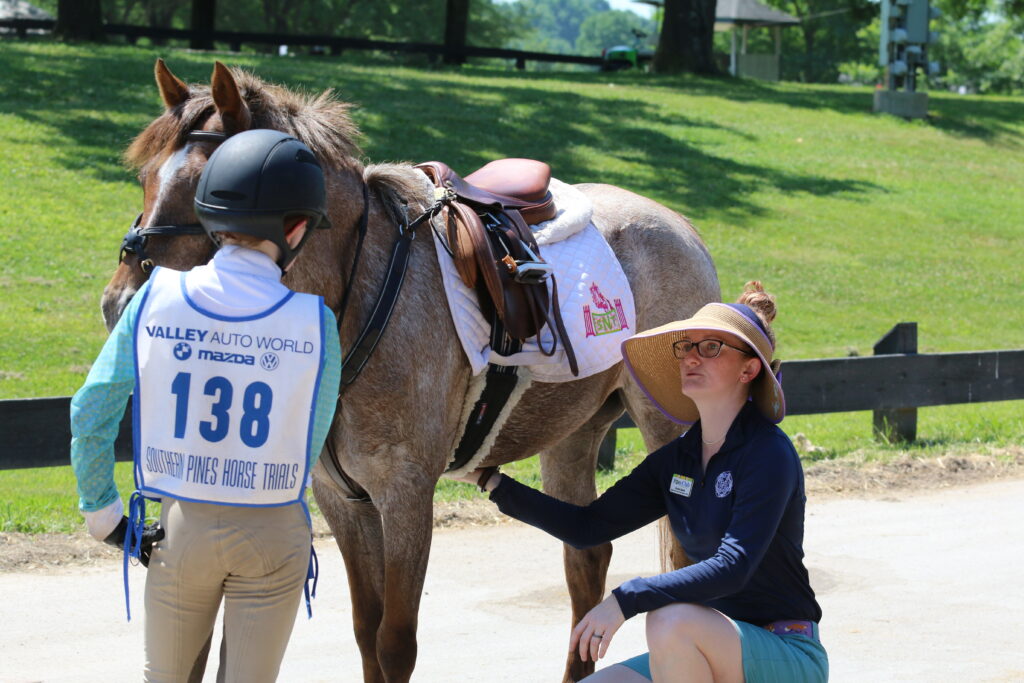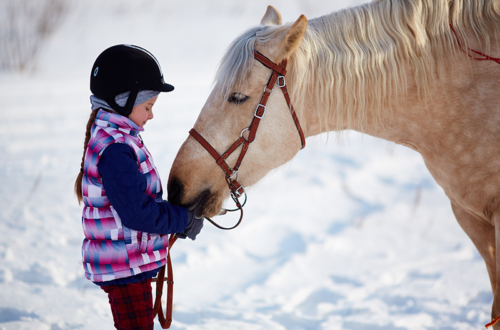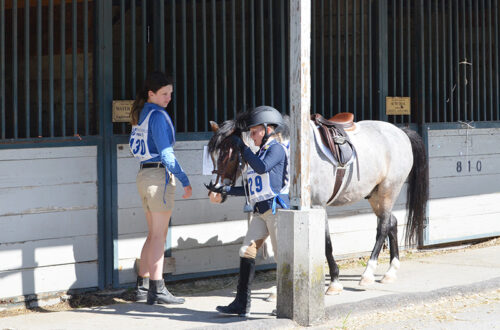
20 Tips on Turnout and Turnback Inspections and the Horse Inspection
By Melissa Dabadie, Chief Horse Management Judge (CHMJ)
Good horse management will keep you and your horse safe and happy. If something happens to you, then your preparations according to HM guidelines will allow anybody to come in and take care of your horse. It also allows the stable manager to be more efficient in helping you. You should prepare by reading your manual, your HM handbook, the competition rules, and the discipline’s rulebook. Horse Management at a rally or at USPC Championships should reinforce what you already know and practice at home.
Turnout Inspection Ideas
The purpose of a turnout inspection is to give the horse-and-rider pair a safety check and to see that the rider has prepared themself, their pony, and their equipment for competition in accordance with their certification and the discipline rules. Turnout inspections usually take 10 minutes or less. This time allows the inspector to assess whether a member meets the standard for turnout and also catch problems that may affect the competitor’s ride (e.g. attire, fit or safety of tack, or appropriate equipment).

- Arrive well before your scheduled turnout Inspection time. This will give you time to check in and adjust or wipe down any last-minute items. The penalty for being late can affect both your Horse Management score and overall team score, so be 5-10 minutes early, if possible.
- Introduce yourself and your pony to the inspector with confidence. Tell your certification; the name of your club or center; and if your pony is spooky, girthy, head shy, etc.
“Hi, my name is Juliana Banana. I am a D-2 from Dusty Bottoms Pony Club. My pony’s name is Wasabi, and he may try to kick you if you touch his tail. I am ready for my turnout inspection.” - Ask your stable manager to come with you to your inspection with a few grooming supplies, like a face and dock sponge or wipes, a hoof pick, and a rub rag. Wipe the dust off your boots, and check your pony’s feet, eyes, nose, mouth, and dock. Or if you are alone, you can tuck a wet wipe or two into your pocket and do the job yourself.
- Good ground manners are essential for an accurate inspection. You pony needs to hold still. An HM judge can do a safety inspection without much contact, but to get Exceed Standards points, the judge is going to need a good look at everything. Practice with your pony ahead of the inspection for good ground manners.
- If you’re feeling competitive, aim for at least one certification level above your own to get those tie-breaking Exceed Standards (ES) points. ES occur when you meet all of the standards for your certification and also the certification(s) above yours. ES are used as tie-breakers when there is a tie in scoring. There are some easy ways to get ES on your turnout inspection if you pay attention to details. The following are not guaranteed ES, but they could be if you have everything required in that category and impress the inspector with your attention to detail.
Things that could earn an ES as a D include:
- Wear a hairnet.
- Wear felt behind your pin.
- Polish your boots.
- Wear correct competition attire.
- Groom your pony well.
- Fit and adjust all tack properly.
- Condition your leather.
- Polish your metal.

To exceed standards if you’re a C or above, it will often come from the depth of knowledge you have about caring for your tack and horse. Look at the above list and also at the differences in the standards above yours. Everyone can exceed standards at the turnout inspection.
Good luck!
For more information on Turnout Inspection, see the USPC Horse Management Handbook and Competition Rules, Article 107-109 and Section VI: Chapter 23 A.
Turnback Inspection Tips
The purpose of a turnback inspection is to show that you have cared for yourself, your mount, and your tack after you ride. Turnbacks take place after the first ride of the day in Pony Club. There are no turnback inspections after the last phase at a one-day rally or on the last day of a multi-day rally, however, you should always care for yourself, your horse, and your tack after every ride.
- Take care of your pony first. He’ll have more time to cool out completely and dry if you start there. Pay close attention to the area where the saddle and bridle go, and on the chest, neck, flank, and in between the back legs where sweat sometimes accumulates. Don’t forget to pick your horse’s hooves.
- For your riding boots, brush off the bottoms and wipe them down before putting them in a boot bag. Any dirt still attached can rub and act like sandpaper on your fancy boots. Boot toes and trees for tall boots will extend the life of your boots.
- For your tack, focus on places that are:
○ dirty (e.g., the bit should be rinsed and the saddle pad brushed of hair)
○ sweaty (e.g., the girth, inside of the bridle on the nose and browband, and the reins where they touch the neck should be wiped down), and
○ stress points (anywhere metal touches leather, like where stirrup irons hang from stirrup leathers) - Turnbacks seem like a lot of work if you’re not in the habit of caring for your horse and equipment. Routines like these are part of good horse management and can be completed quickly with practice.
For more information on turnback inspections, see the USPC Horse Management Handbook and Competition Rules, Article 110 and Section VI: Chapter 23 B.
Horse Inspection Hot Points
The purpose of the horse inspection (jog) is to assess the soundness of the mount for the work expected of them at the competition. Horses are usually jogged in a specific order—by team or by ride time, depending on what the organizer needs.

- Introduce yourself and your pony to the inspection panel, but make it brief. They need to know your name, what division you are riding in, the age of your pony, and whether your pony has any medications or medical conditions that may affect your pony’s soundness. Practice this so the vet doesn’t spend time trying to pump you for information.
“Hi, my name is Juliana Banana. I’m riding in Beginner Novice. This is my pony, Sugar. She’s 28, and she takes 1 gram of Bute per day for arthritis.” - If the inspection panel wants you to jog both away and toward them, remember to jog down, walk around the turn, then jog back. They do not want to see your pony jog around the turn.
- Always turn your pony away from you (to the right) when you are turning around. This way, the panel can see your pony at all times. It also keeps your pony from stepping on you in a tight turn.
- Sometimes, the panel will only watch you jog in one direction unless there is a question. Make sure you understand the expectation before you start.
- If your pony is “spun” or needs a second look from the inspection panel, don’t panic. Sometimes ponies need extra time to walk and warm up before they can jog soundly on the chosen footing. Keep your pony moving until it is time to jog.
For more information on the horse inspection, see the USPC Horse Management Handbook and Competition Rules, Section III: Chapter 12, Articles 102-106.





